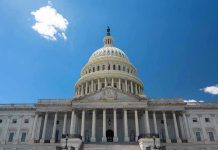
When the U.S. Embassy issues a formal travel warning about wildlife attacks in one of the world’s safest countries, you know something has gone seriously wrong in the Japanese wilderness.
Story Highlights
- Over 100 bear attacks reported in Japan, prompting unprecedented U.S. Embassy warning for American travelers
- Asiatic black bears and brown bears increasingly venture into human settlements due to habitat loss and food scarcity
- Rural depopulation and climate change create perfect storm for dangerous wildlife encounters
- Northern prefectures like Akita, Iwate, and Hokkaido see highest concentration of attacks during autumn foraging season
When Paradise Turns Perilous
Japan’s reputation as a traveler’s dream destination took an unexpected hit when diplomatic officials issued something rarely seen: a wildlife attack advisory. The warning specifically targets American tourists venturing into Japan’s scenic rural and mountainous regions, where encounters with aggressive bears have skyrocketed to levels that caught international attention. This isn’t your typical “be aware of pickpockets” travel notice.
The timing couldn’t be more critical. Autumn represents peak danger season when bears desperately forage before winter hibernation, their desperation making them bolder and more unpredictable around humans. What was once considered a remote possibility has become a statistical reality that demanded diplomatic intervention.
The Perfect Storm of Rural Abandonment
Japan’s aging rural population created an unintended consequence that wildlife experts saw coming decades ago. As younger generations fled to cities, vast swaths of countryside returned to nature, but without the human presence that historically kept wildlife at respectful distances. Abandoned farms and shrinking communities became bear highways leading directly to remaining human settlements.
Climate change compounded the crisis by disrupting traditional food sources. Bears accustomed to predictable seasonal meals found themselves venturing closer to human habitation, where garbage, crops, and unfortunately, people provided alternative sustenance. The Asiatic black bear and Ussuri brown bear populations, no longer confined to deep wilderness, began treating suburban edges as extended territory.
Unprecedented Diplomatic Response
Embassy warnings typically address political unrest, natural disasters, or terrorism threats. Wildlife attacks severe enough to warrant formal diplomatic advisories represent uncharted territory for U.S. consular services. The decision reflects the gravity of a situation where over 100 documented attacks created genuine safety concerns for American citizens abroad.
Japanese authorities found themselves managing a crisis that traditional wildlife management strategies couldn’t adequately address. Increased patrols, public safety alerts, and selective culling of aggressive bears represented stopgap measures for a problem requiring systemic solutions. The international attention brought additional pressure on local governments already struggling with resource constraints in depopulated regions.
Beyond Tourist Safety
The economic implications extend far beyond immediate safety concerns. Japan’s tourism industry, still recovering from pandemic disruptions, faces potential reputation damage in key international markets. Rural communities dependent on autumn tourism revenue during peak foliage season now confront the possibility of visitors avoiding precisely the scenic mountain areas that drive their economies.
Local residents caught between aggressive wildlife and economic necessity find themselves adapting to new realities. Bear-proofing measures, altered daily routines, and constant vigilance have become standard practice in communities that previously coexisted peacefully with distant wildlife populations. The psychological impact of living under constant threat transforms rural Japanese life in ways that statistics cannot capture.
Sources:







